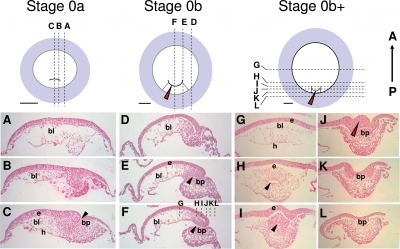User:Z5018267
| Student Information (expand to read) | ||||||||||||||||||||||||||||||||||||||||||||||||||||||||||||||||
|---|---|---|---|---|---|---|---|---|---|---|---|---|---|---|---|---|---|---|---|---|---|---|---|---|---|---|---|---|---|---|---|---|---|---|---|---|---|---|---|---|---|---|---|---|---|---|---|---|---|---|---|---|---|---|---|---|---|---|---|---|---|---|---|---|
| Individual Assessments | ||||||||||||||||||||||||||||||||||||||||||||||||||||||||||||||||
|
Please leave this template on top of your student page as I will add your assessment items here. Beginning your online work - Working Online in this course
Click here to email Dr Mark Hill | ||||||||||||||||||||||||||||||||||||||||||||||||||||||||||||||||
| Lab 1 Assessment - Researching a Topic | ||||||||||||||||||||||||||||||||||||||||||||||||||||||||||||||||
In the lab I showed you how to find the PubMed reference database and search it using a topic word. Lab 1 assessment will be for you to use this to find a research reference on "fertilization" and write a brief summary of the main finding of the paper.
| ||||||||||||||||||||||||||||||||||||||||||||||||||||||||||||||||
| Lab 2 Assessment - Uploading an Image | ||||||||||||||||||||||||||||||||||||||||||||||||||||||||||||||||
OK you are now in a group
Initially the topic can be as specific or as broad as you want. Chicken embryo E-cad and P-cad gastrulation[1] References
| ||||||||||||||||||||||||||||||||||||||||||||||||||||||||||||||||
| Lab 4 Assessment - GIT Quiz | ||||||||||||||||||||||||||||||||||||||||||||||||||||||||||||||||
|
ANAT2341 Quiz Example | Category:Quiz | ANAT2341 Student 2015 Quiz Questions | Design 4 quiz questions based upon gastrointestinal tract. Add the quiz to your own page under Lab 4 assessment and provide a sub-sub-heading on the topic of the quiz. An example is shown below (open this page in view code or edit mode). Note that it is not just how you ask the question, but also how you explain the correct answer. | ||||||||||||||||||||||||||||||||||||||||||||||||||||||||||||||||
| Lab 5 Assessment - Course Review | ||||||||||||||||||||||||||||||||||||||||||||||||||||||||||||||||
| Complete the course review questionnaire and add the fact you have completed to your student page. | ||||||||||||||||||||||||||||||||||||||||||||||||||||||||||||||||
| Lab 6 Assessment - Cleft Lip and Palate | ||||||||||||||||||||||||||||||||||||||||||||||||||||||||||||||||
| ||||||||||||||||||||||||||||||||||||||||||||||||||||||||||||||||
| Lab 7 Assessment - Muscular Dystrophy | ||||||||||||||||||||||||||||||||||||||||||||||||||||||||||||||||
| ||||||||||||||||||||||||||||||||||||||||||||||||||||||||||||||||
| Lab 8 Assessment - Quiz | ||||||||||||||||||||||||||||||||||||||||||||||||||||||||||||||||
| A brief quiz was held in the practical class on urogenital development. | ||||||||||||||||||||||||||||||||||||||||||||||||||||||||||||||||
| Lab 9 Assessment - Peer Assessment | ||||||||||||||||||||||||||||||||||||||||||||||||||||||||||||||||
| ||||||||||||||||||||||||||||||||||||||||||||||||||||||||||||||||
| Lab 10 Assessment - Stem Cells | ||||||||||||||||||||||||||||||||||||||||||||||||||||||||||||||||
As part of the assessment for this course, you will give a 15 minutes journal club presentation in Lab 10. For this you will in your current student group discuss a recent (published after 2011) original research article (not a review!) on stem cell biology or technology.
| ||||||||||||||||||||||||||||||||||||||||||||||||||||||||||||||||
| Lab 11 Assessment - Heart Development | ||||||||||||||||||||||||||||||||||||||||||||||||||||||||||||||||
| Read the following recent review article on heart repair and from the reference list identify a cited research article and write a brief summary of the paper's main findings. Then describe how the original research result was used in the review article.
<pubmed>26932668</pubmed>Development | ||||||||||||||||||||||||||||||||||||||||||||||||||||||||||||||||
| ||||||||||||||||||||||||||||||||||||||||||||||||||||||||||||||||
Lab Attendance
Z5018267 (talk) 14:39, 12 August 2016 (AEST)
Z5018267 (talk) 13:27, 19 August 2016 (AEST)
Z5018267 (talk) 13:33, 26 August 2016 (AEST)
Z5018267 (talk) 13:50, 2 September 2016 (AEST)
Z5018267 (talk) 13:34, 9 September 2016 (AEST)
Belbin Team Roles
Personally I believe that I have qualities which are found in many of the team roles outlined in 'Belbin's Model Team Roles' and it is difficult to restrict myself to a single role, however I feel that I am most closely correlated with the role of an implementer. I enjoy hands on work which engages me directly and have shown in the past to be efficient at coalescing ideas from multiple group members in order to work towards a common goal. As the provided description denotes I am not very particular when selecting which part of a team assignment I will take upon myself, however I disagree with the inflexibility and close-mindedness points as I am always open to new ideas which could further improve any plans that I may have already made.
Lecture 1: Fertilisation
Embryology is a area which I am somewhat familiar with however during my previous studies it was only touched upon, the fertilization lecture opened my eyes to just how intricate this single process really is and how much more there is to embryology than I knew. I myself found the sex determination steps the most interesting especially how male gonad development is activated by a Sry gene on the Y chromosome.
Lab 1 Assessment
<pubmed>27502144</pubmed> Malaria is a disease spread via the Anopheles mosquito and over the last four decades vector control methods have become increasingly ineffective due to the emergence of drug resistant parasites. As a result there is much need for an effective antimalarial vaccine to be developed and transmission-blocking vaccines (TBV) are one option which is expected to play a key role in efficient malaria control. The research article aims to test whether or not by combining two sexual-stage antigens in a TBV (the gametocyte antigen Pys48/45 and ookinete surface protein Pys25) a stronger antibody response can be achieved than by utilizing only a single antigen when immunized into mice.
Results founded that both Pys25 and Pys48/45 targeting the pre- and post-fertilization antigens respectively exhibited induced functional transmission-blocking capabilities, with serum from Pys-25 showing a markedly stronger transmission-blocking activity than Pys48/45. This being said the combination of both these DNA constructs during immunization resulted in an inhibitory effect with a drop in transmission-blocking activity due to interference between the two, however the composite vaccination did show higher activity when compared to the Pys48/45 only vaccination group. The findings do not yet reveal whether this phenomenon is only active in DNA vaccines and forms the ground work in working towards future possible efficacious composite vaccines.
| Mark Hill 18 August 2016 - You have added the citation correctly and written a good brief summary of the article findings. Unfortunately, this paper is not on the topic described for assessment, unless you include malaria development. Please always read the assessment requirements and if in doubt contact the assessor for clarification.
Lab 1 assessment will be for you to use this to find a research reference on "fertilization" and write a brief summary of the main finding of the paper. |
Assessment 3/5 |
Lab 2 Assessment
| Mark Hill 29 August 2016 - Reference information correctly included with the file summary box. Reference would look better under its own sub-heading, but I have not removed any marks for formatting. No Copyright and Student Image template included with file.
Image added correctly to your page here, but no legend or citation included. |
Assessment 3/5 |
Histological characteristic during turtle gastrulation[1]
| Mark Hill 31 August 2016 - Lab 3 Assessment Quiz - Mesoderm and Ectoderm development. | Assessment 5/5 |
Reference
<pubmed>PMC2442194</pubmed>
Assessment 4
Quiz
Lab 6 Assessment
I have completed the prescribed questionnaire during lab.
- ↑ <pubmed>18628985</pubmed>




